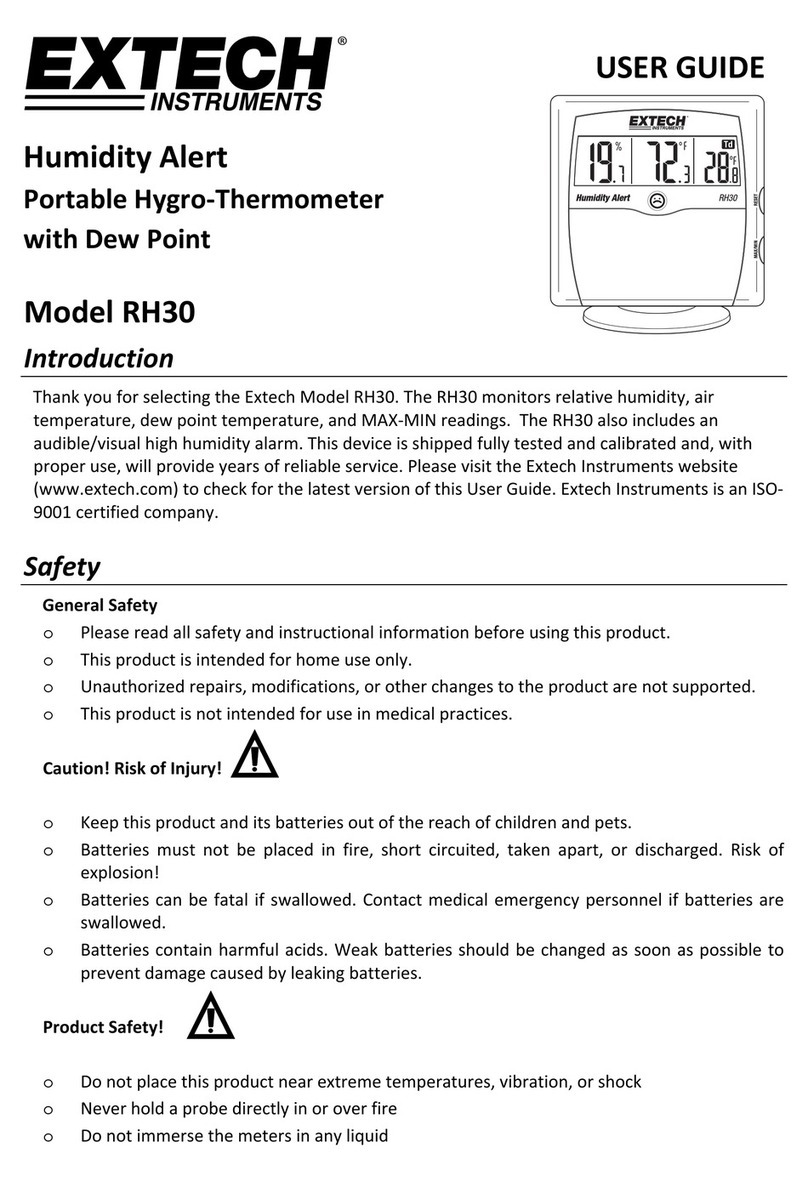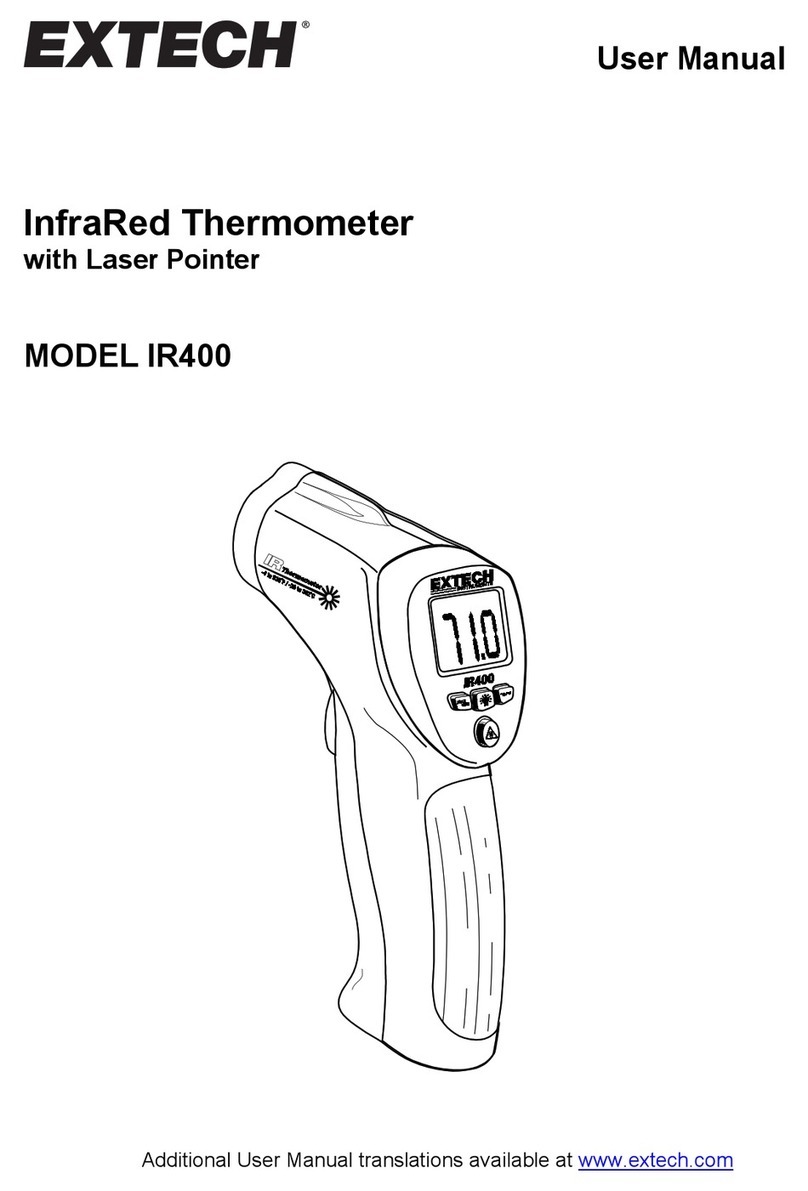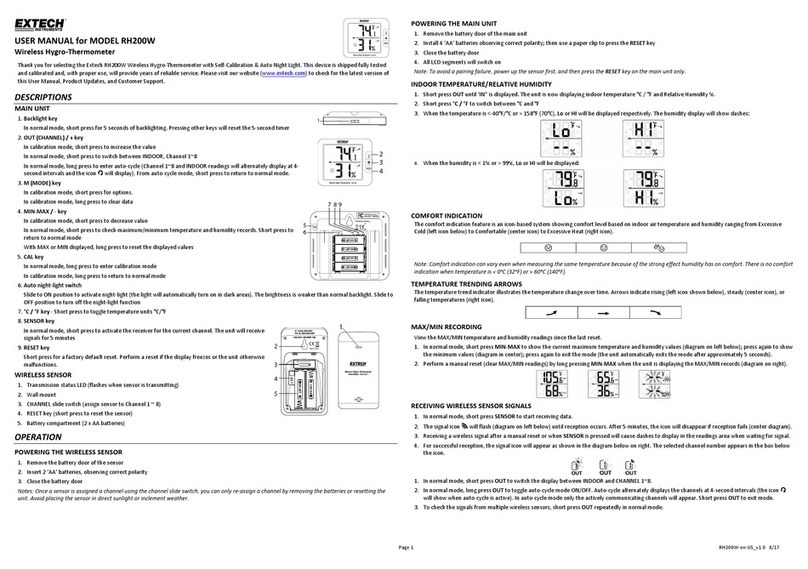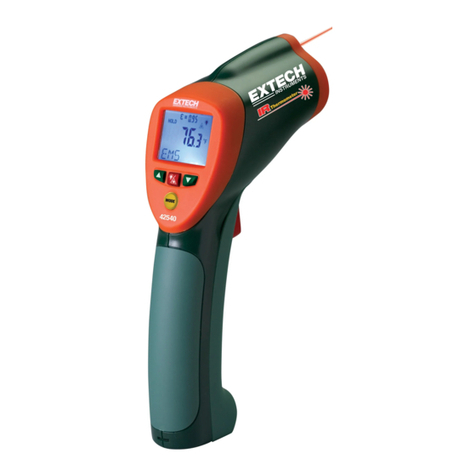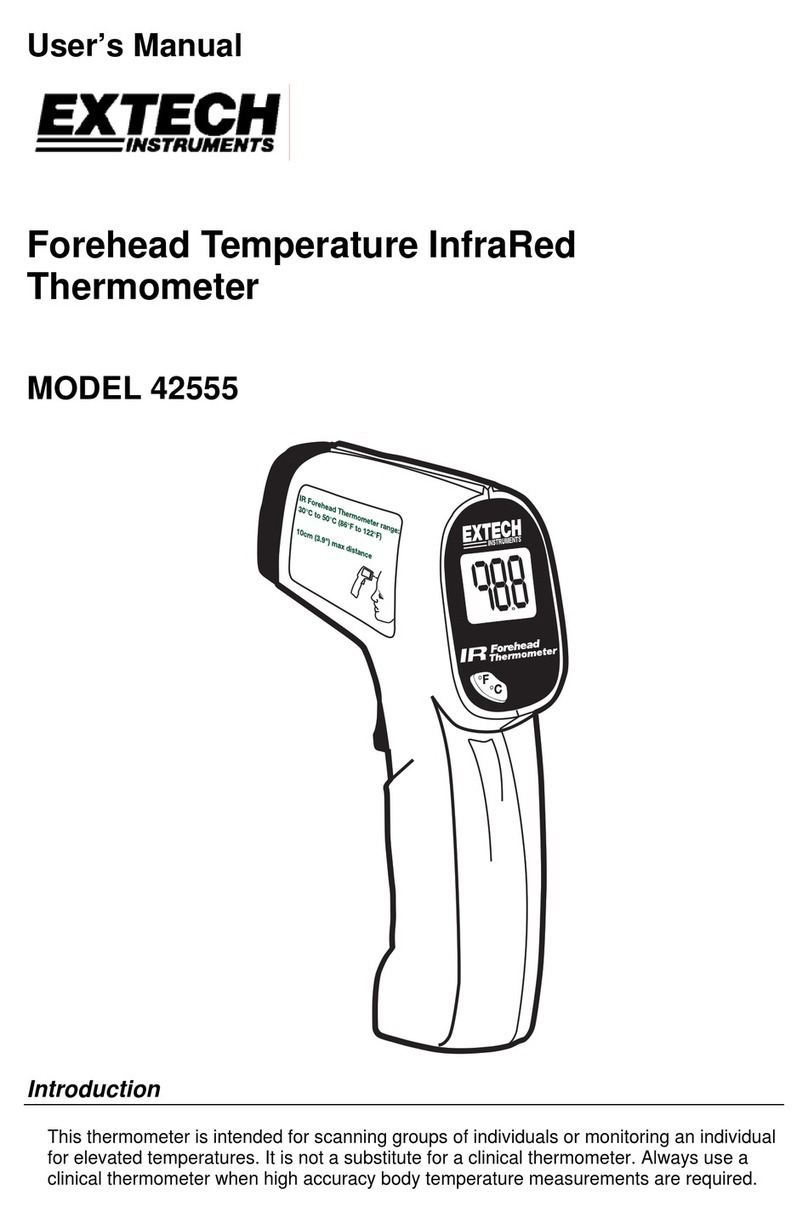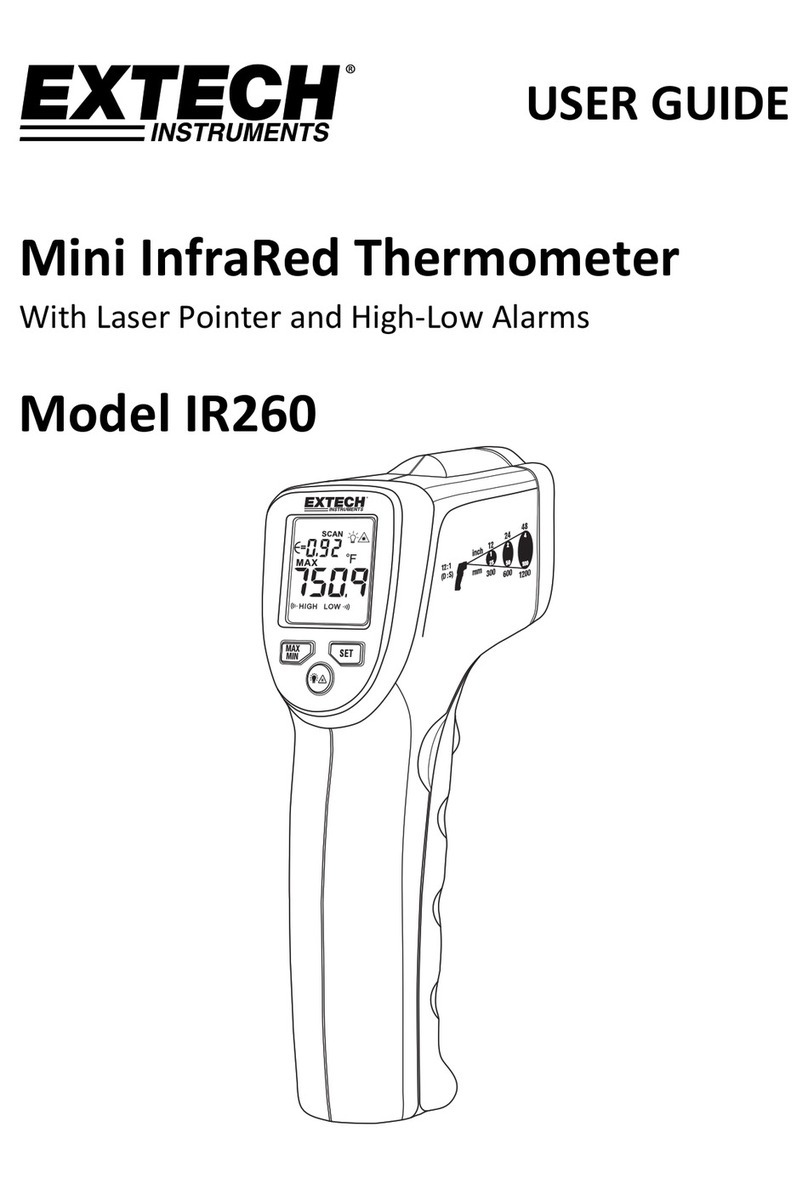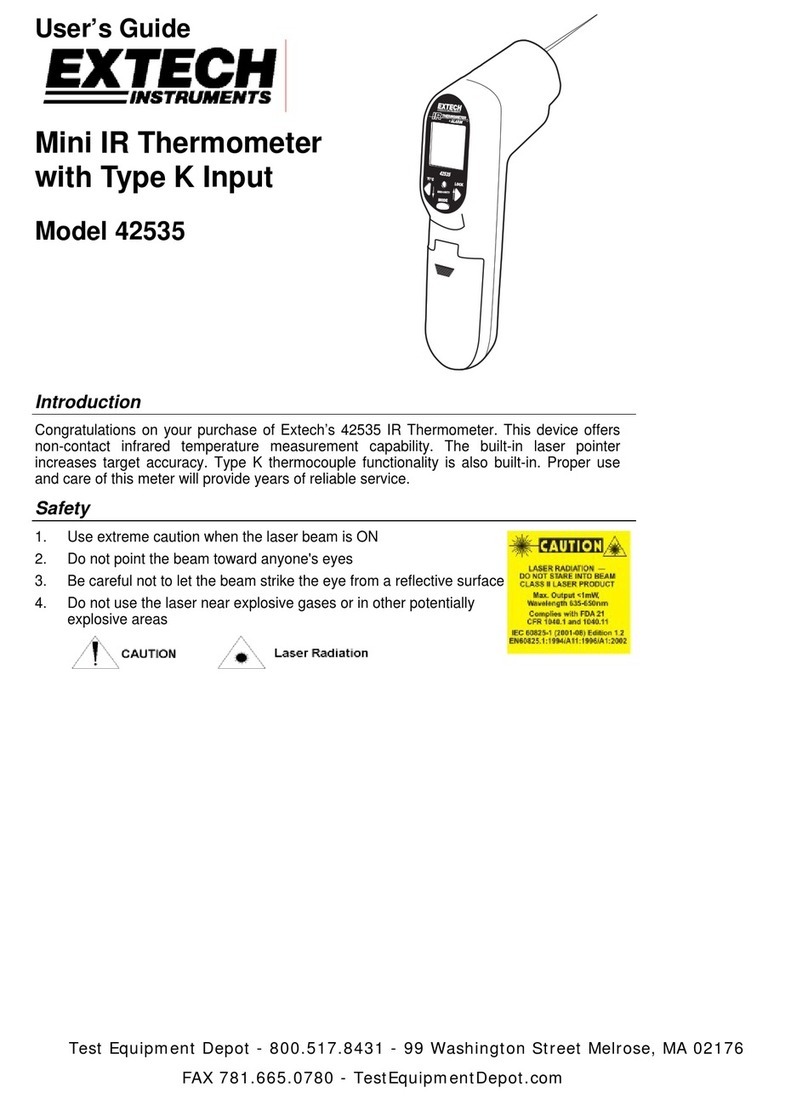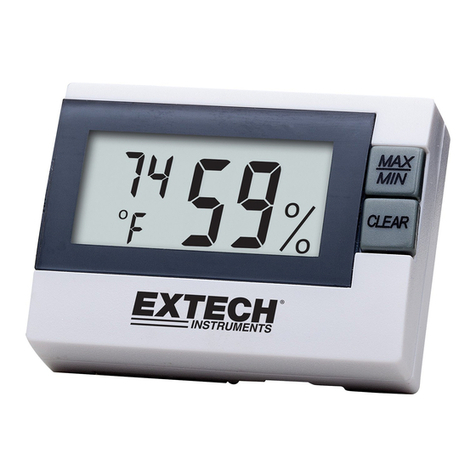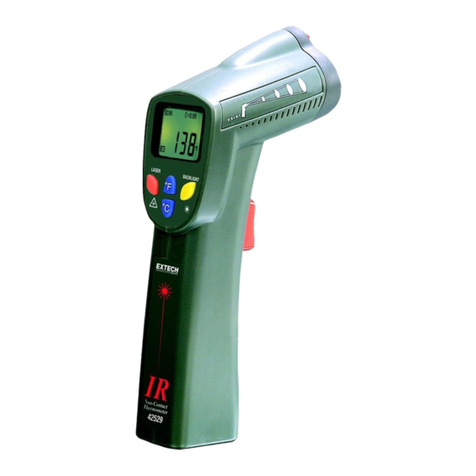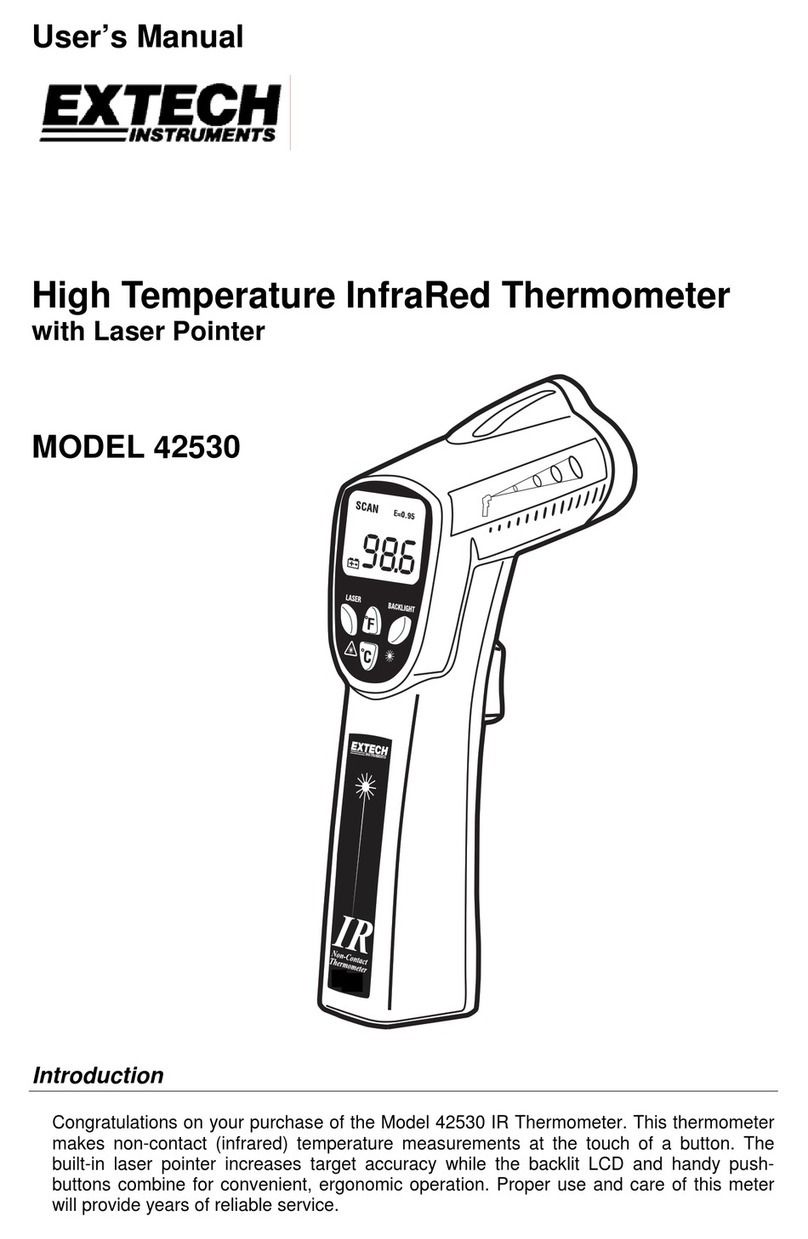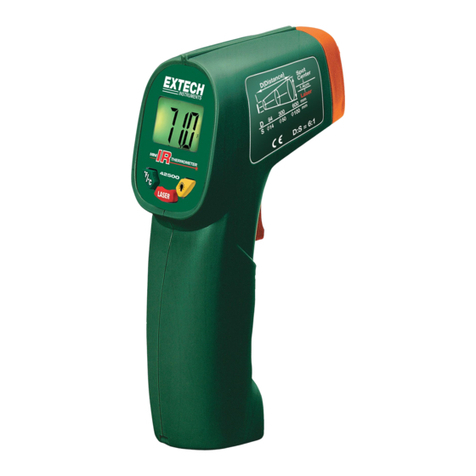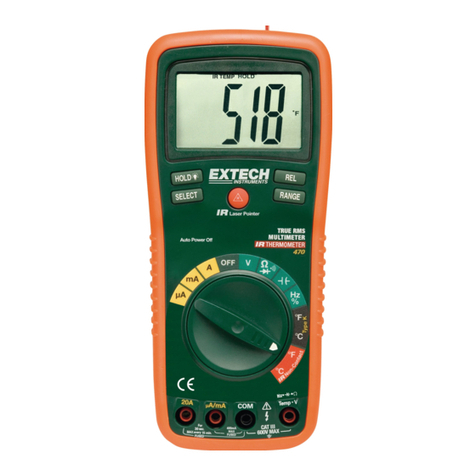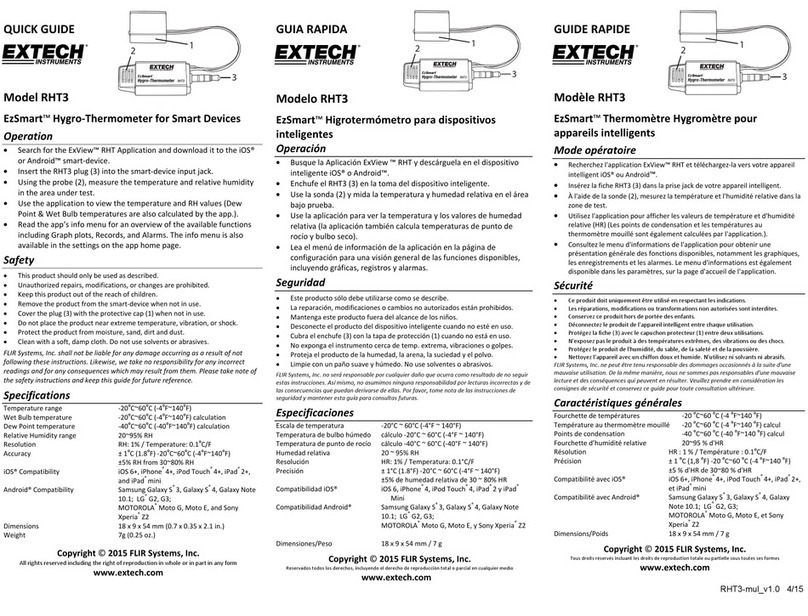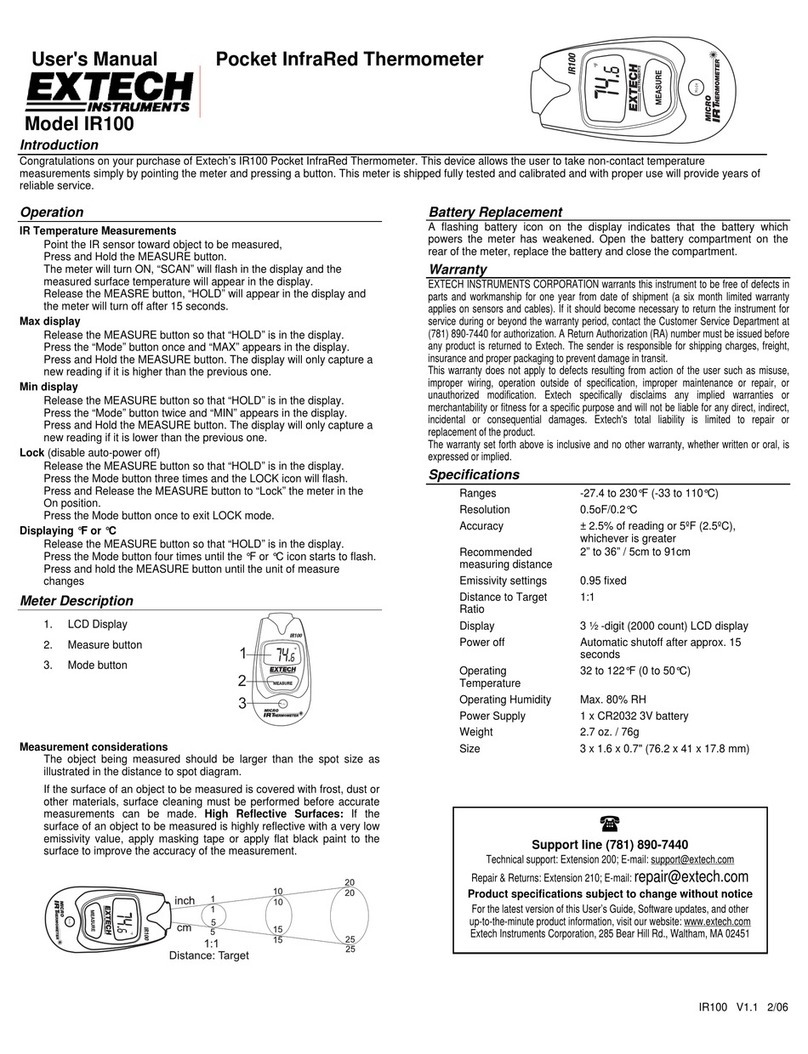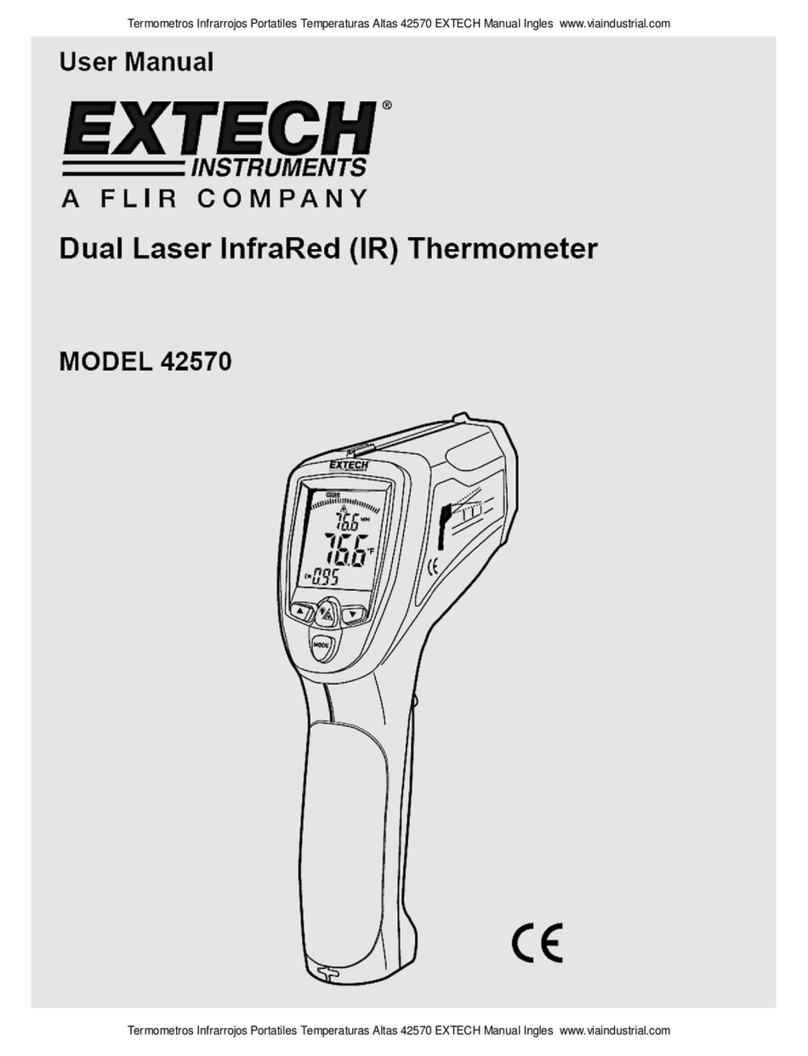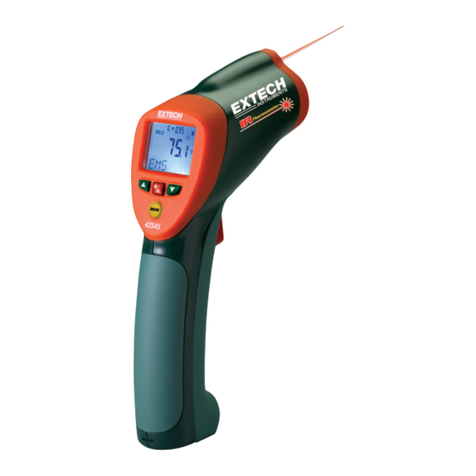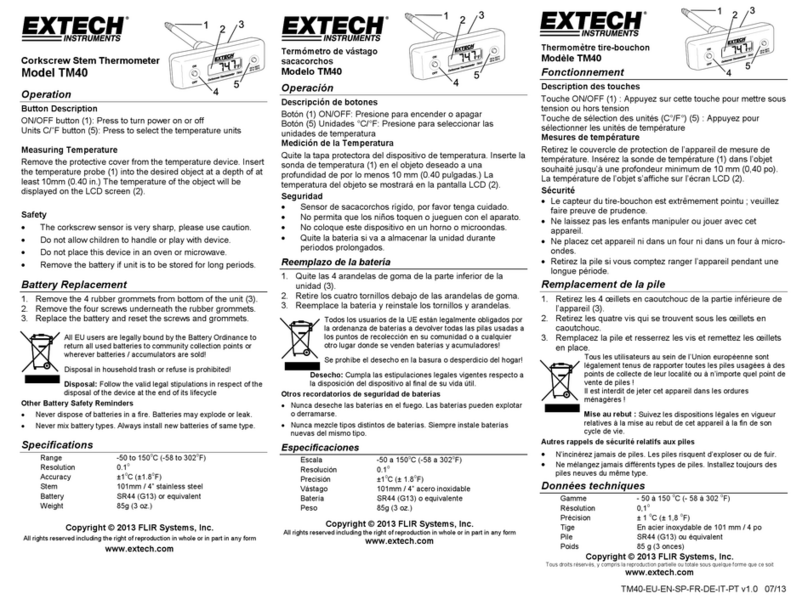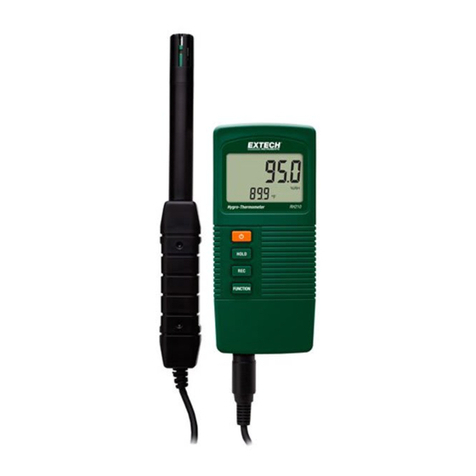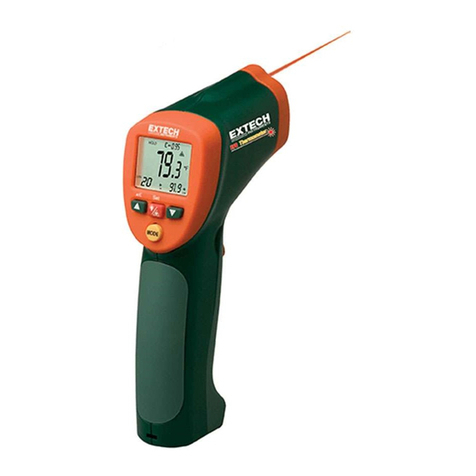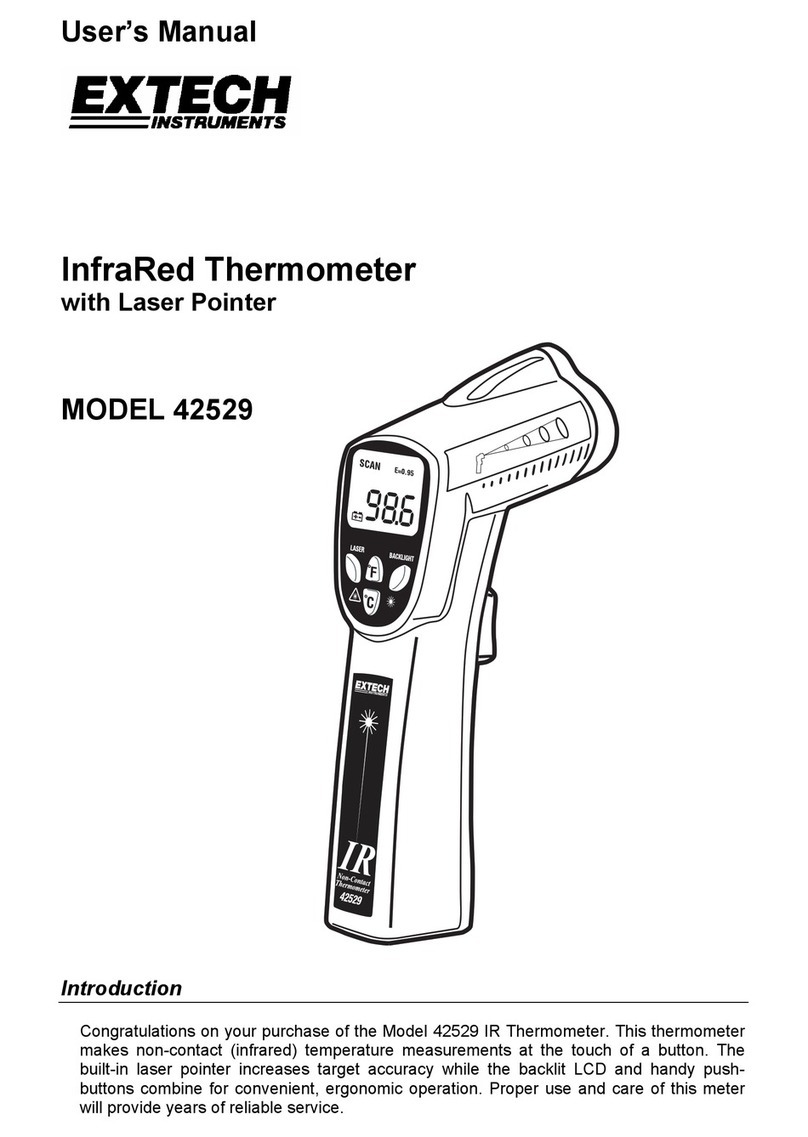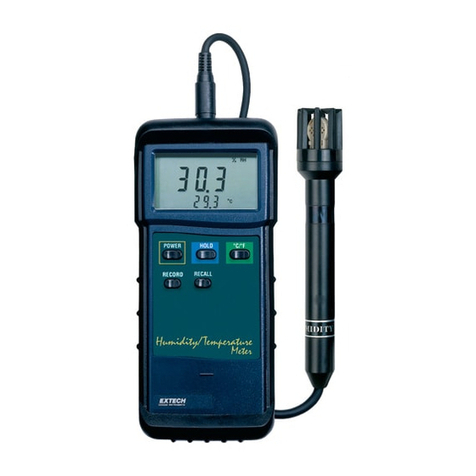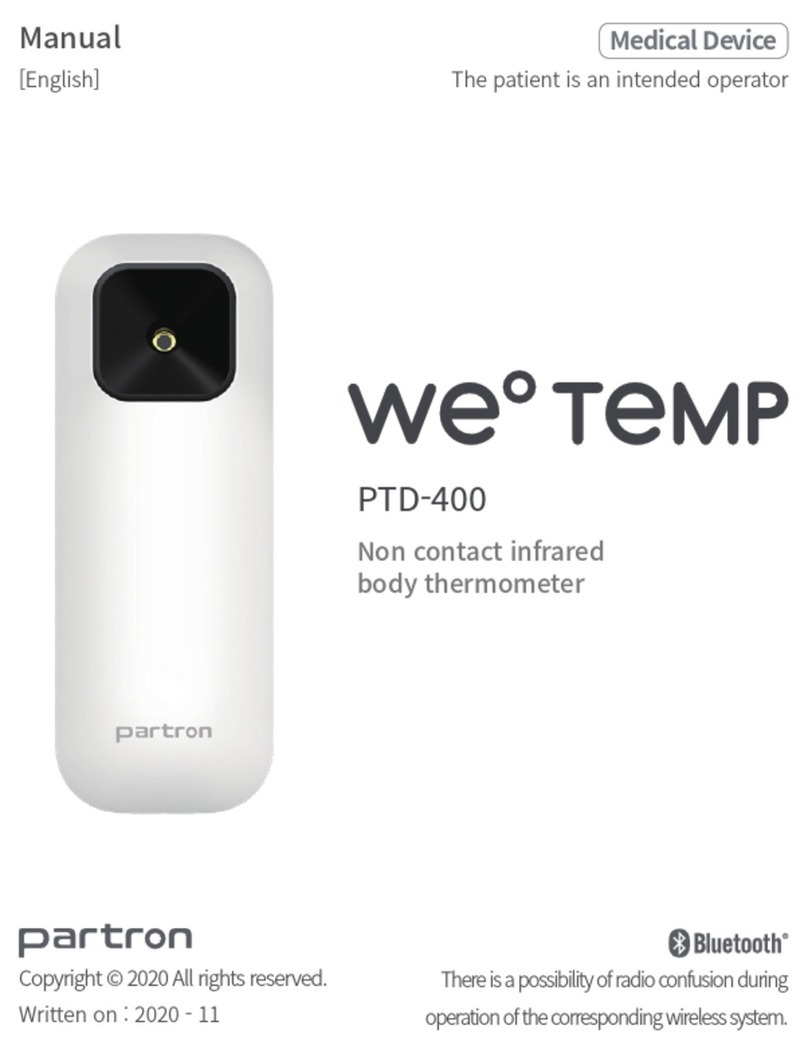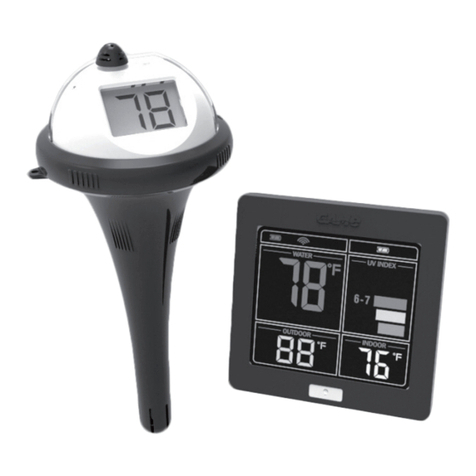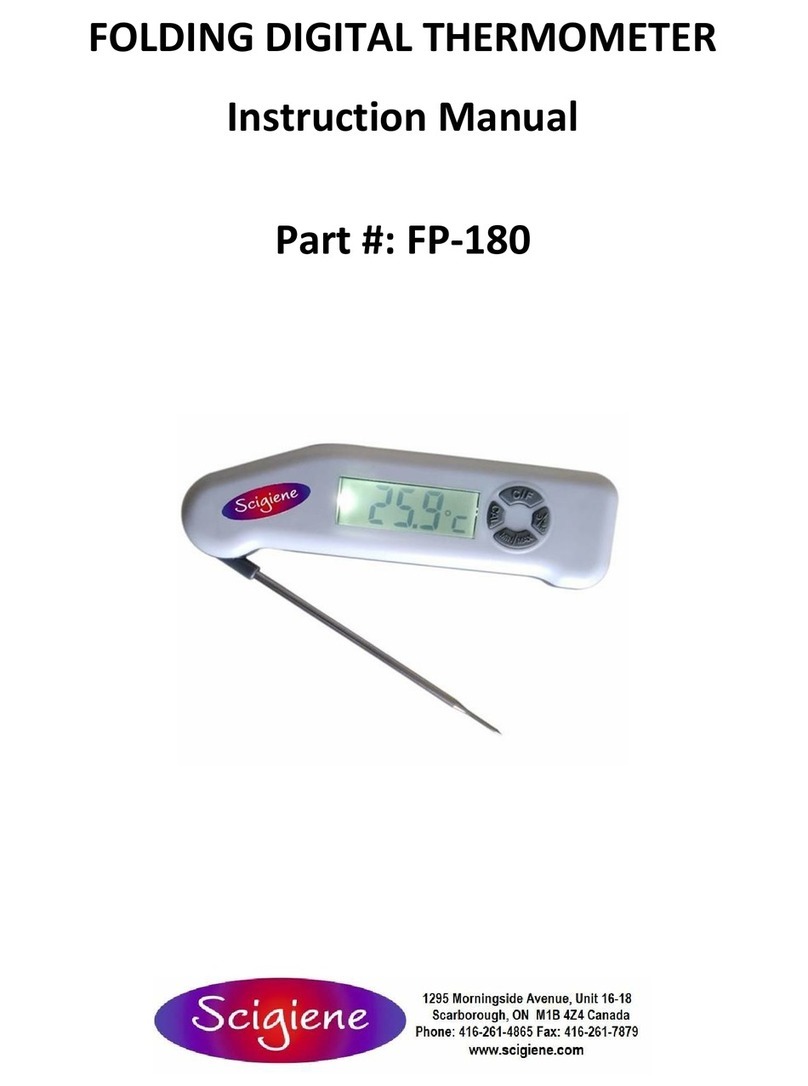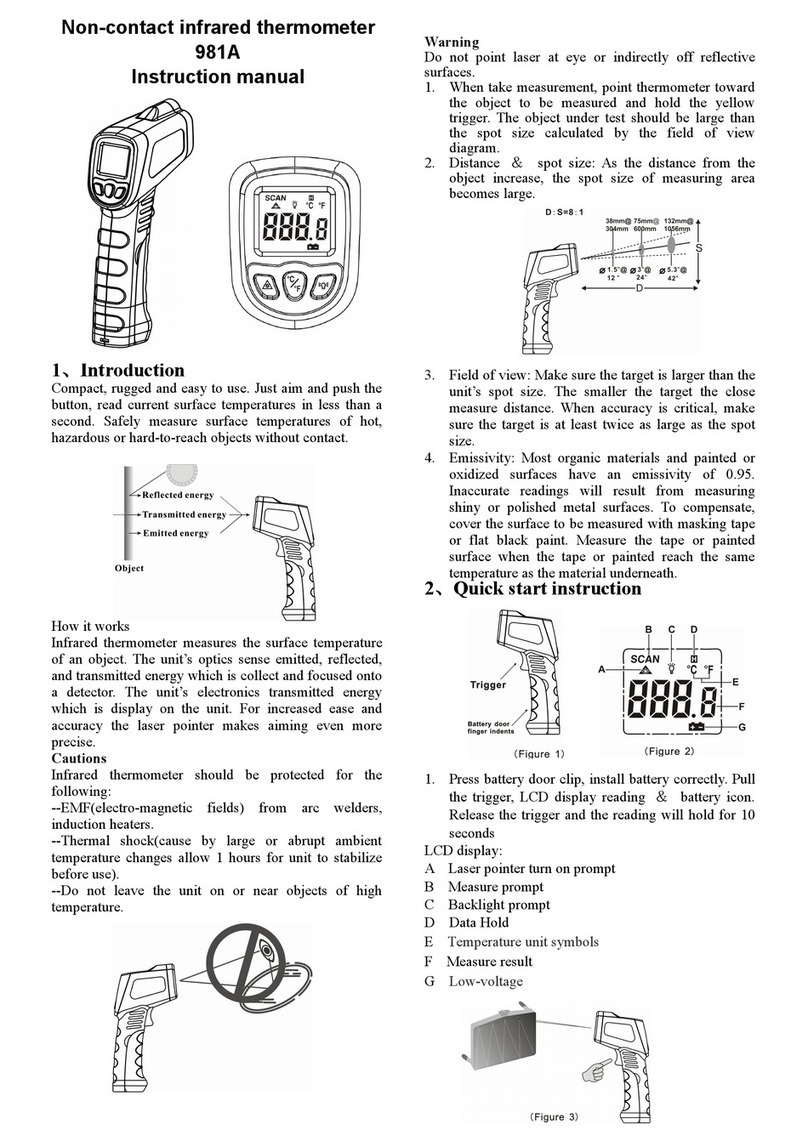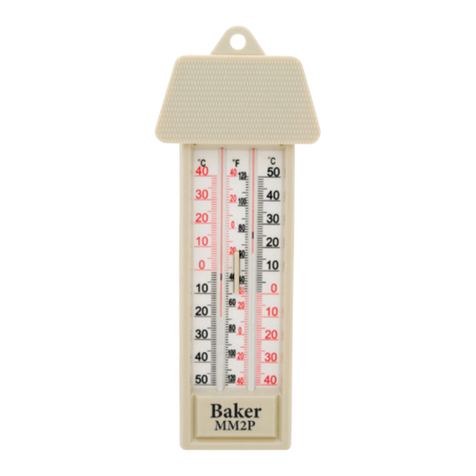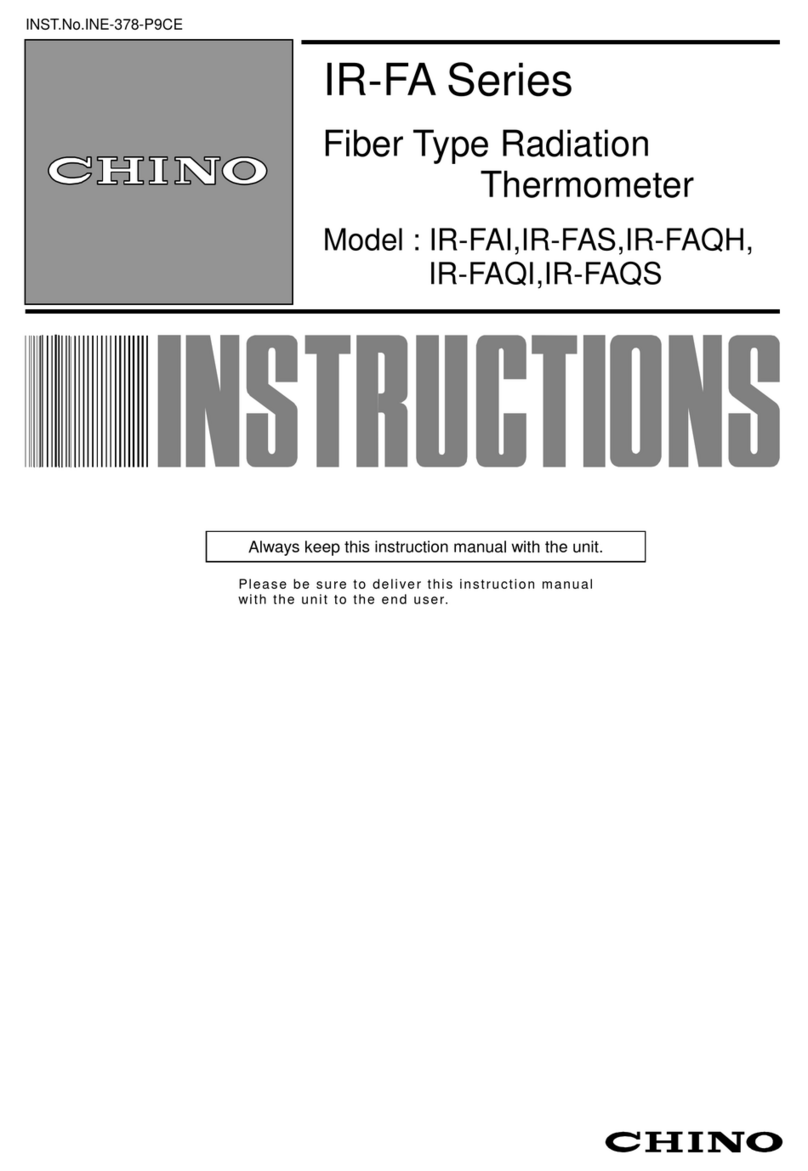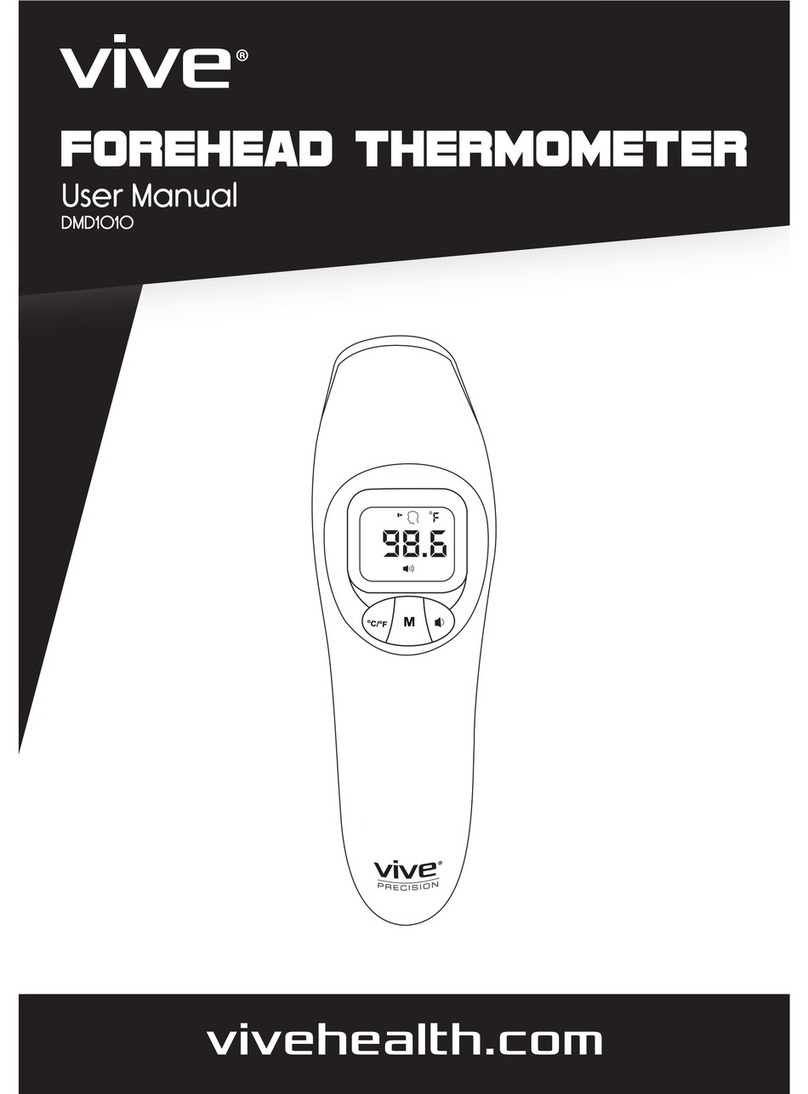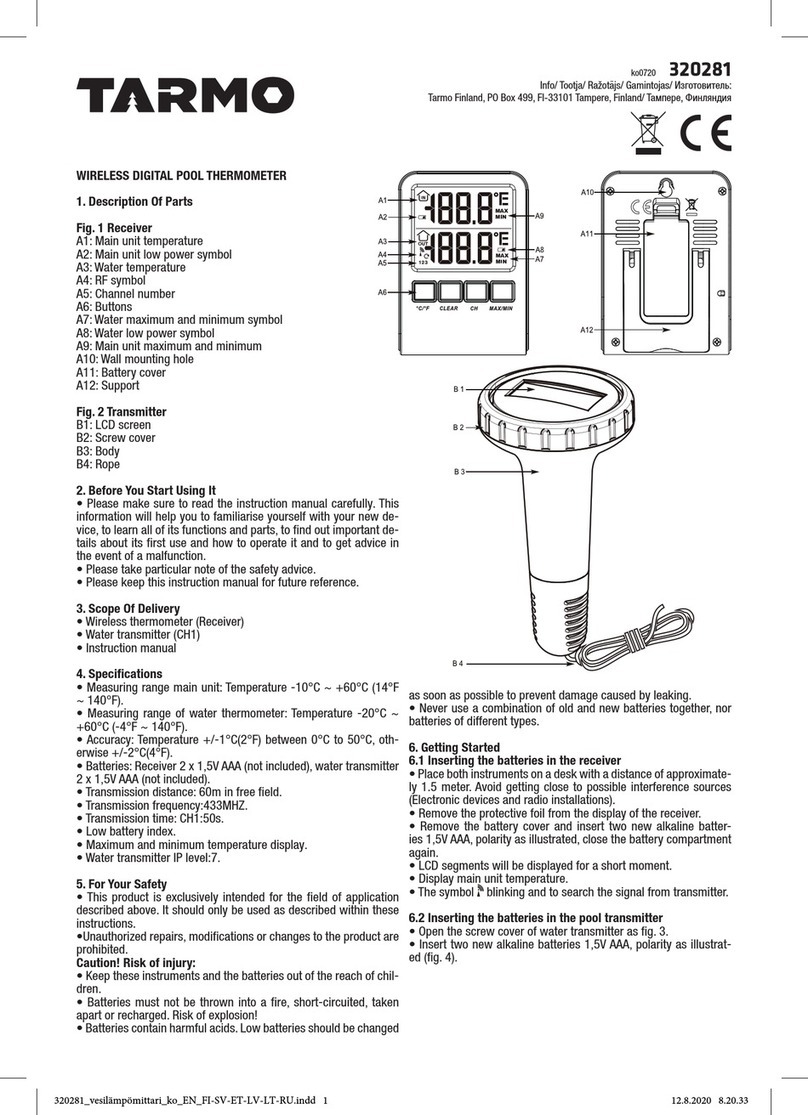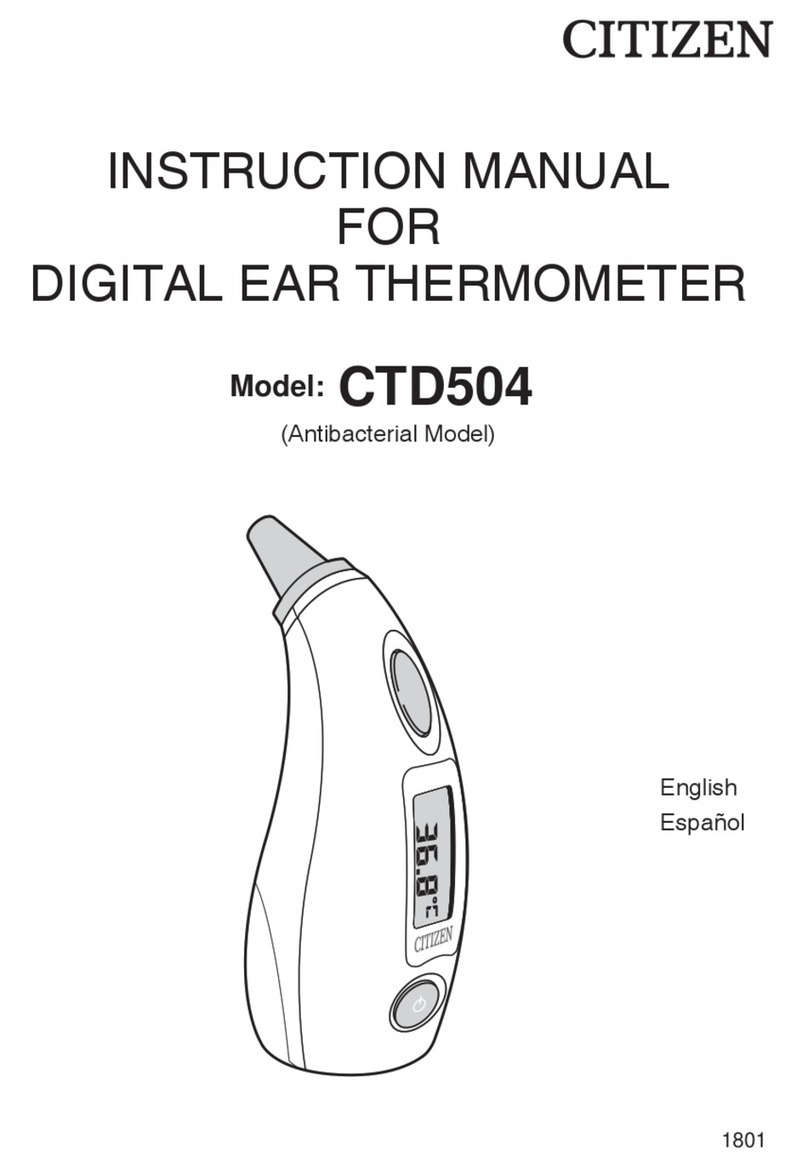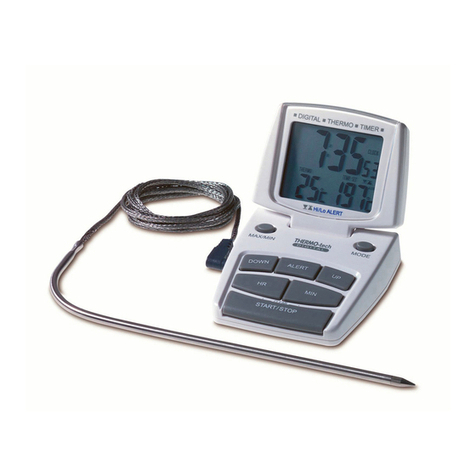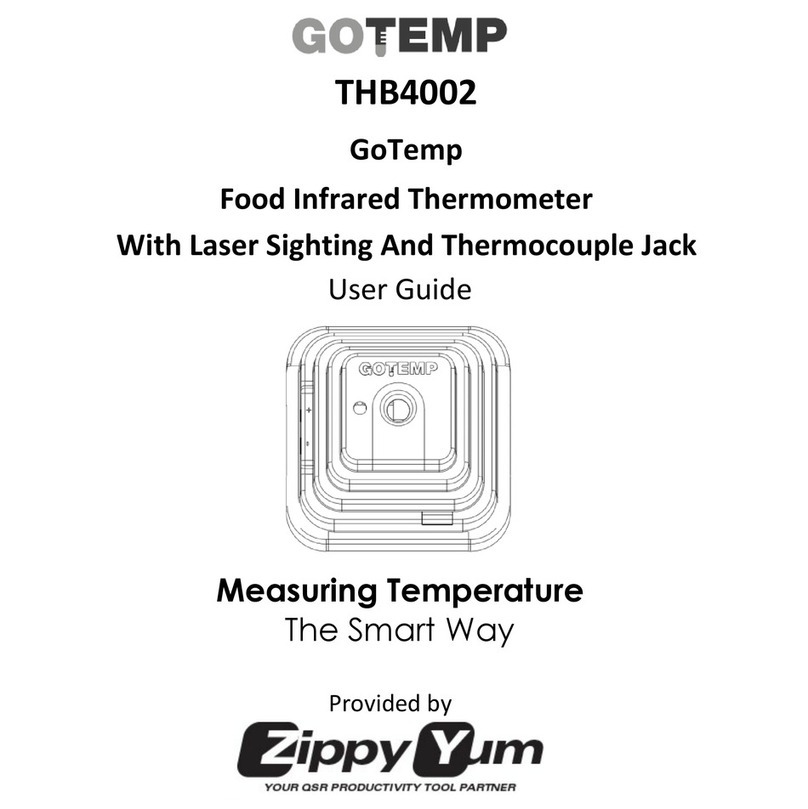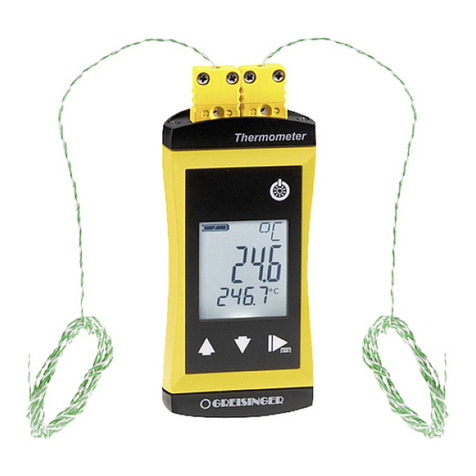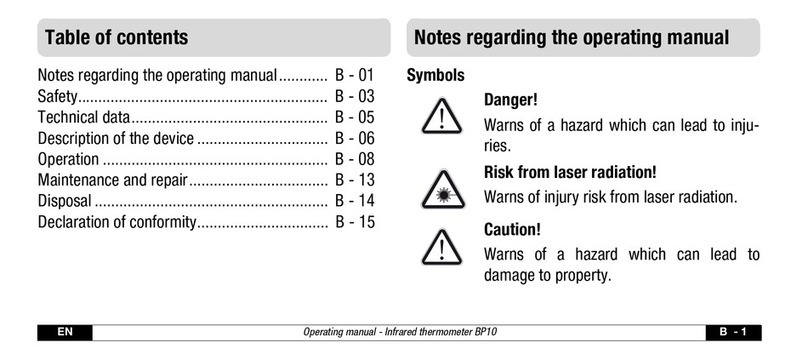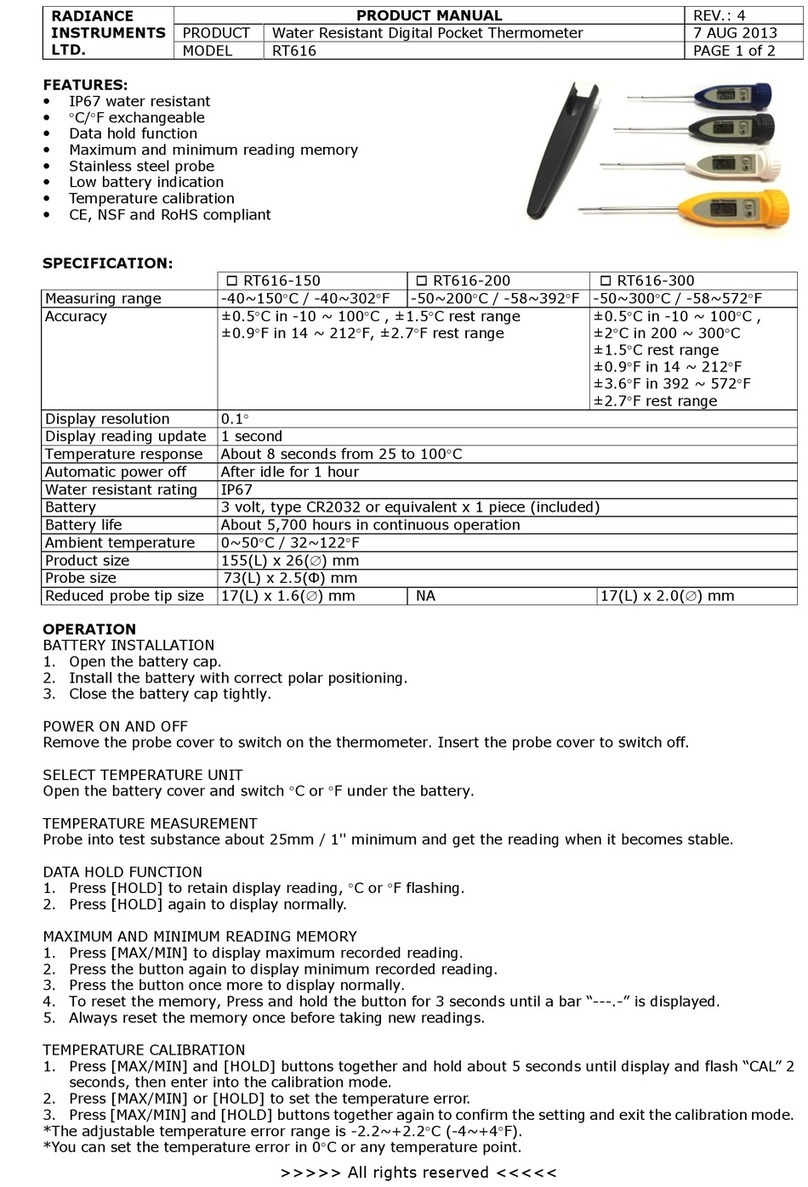Battery Replacement
When the battery symbol appears in the display, replace the meter’s 9V
battery. The battery compartment is located behind the panel that surrounds the
meter’s trigger. The panel can be pried open near the trigger and folded down as
shown in the diagram. Replace the 9V battery and close the battery compartment
cover.
You, as the end user, are legally bound (EU Battery ordinance) to
return all used batteries, disposal in the household garbage is
prohibited! You can hand over your used batteries / accumulators at
collection points in your community or wherever batteries / accumulators
are sold!
Disposal: Follow the valid legal stipulations in respect of the disposal of
the device at the end of its lifecycle
IR Measurement Notes
1. The object under test should be larger than the spot (target) size calculated by the field of view
diagram (printed on the side of the meter and in this guide).
2. Before measuring, be sure to clean surfaces that are covered with frost, oil, grime, etc.
3. If an object's surface is highly reflective, apply masking tape or flat black paint to the surface
before measuring. Allow time for the paint or tape to adjust to the temperature of the surface it is
covering.
4. Measurements can not be made through transparent surfaces such as glass. The surface
temperature of the glass will be measured.
5. Steam, dust, smoke, etc. can obscure measurements.
6. The meter automatically compensates for deviations in ambient temperature. However, it can
take up to 30 minutes for the meter to adjust to extremely wide changes.
7. To find a hot spot, aim the meter outside the area of interest then scan across (in an up and
down motion) until the hot spot is located.
Emissivity and IR Measurement Theory
IR Thermometers measure the surface temperature of an object. The thermometer’s optics sense
emitted, reflected, and transmitted energy. The thermometer’s electronics translate the information
into a temperature reading which is then displayed on the LCD.
The amount of IR energy emitted by an object is proportional to an object's temperature and its
ability to emit energy. This ability is known as emissivity and is based upon the material of the object
and its surface finish. Emissivity values range from 0.1 for a very reflective object to 1.00 for a flat
black finish. For the Model IR400, the emissivity is set to 0.95 which is correct for 90% of typical IR
measurement applications.
